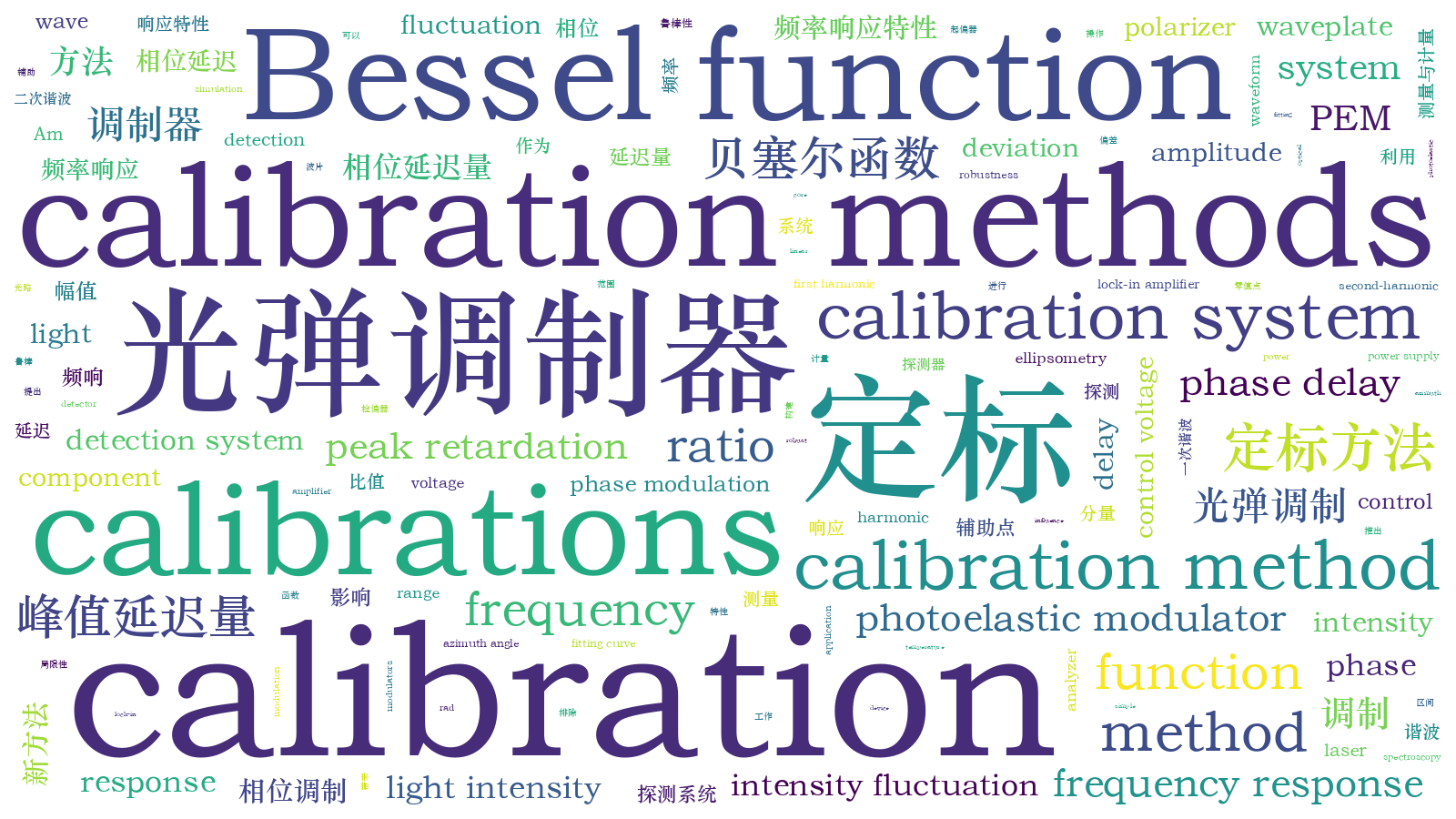无频响影响的光弹调制器定标新方法
With the wide application of ellipsometry spectroscopy technology as the core device for ellipsometry spectrometers in recent years, an increasing number of researchers have begun to study photoelastic modulators (PEM). The amplitude of the phase delay generated when the PEM performs phase modulation is influenced by the control voltage, temperature, and other factors; therefore, the PEM must perform calibration before carrying out the work. Current calibration methods for the PEM mainly include the Bessel function ratio, half-wave flat-top, and fundamental frequency component maximum methods. Many calibration methods require the use of the Bessel function ratio, and the frequency response of the calibration system must be considered based on the ratio between different frequency octaves, which is also a problem likely to be ignored. Moreover, this problem is difficult to solve. To solve this problem, we propose a new calibration method that can eliminate the influence of the frequency response of the calibration system. The proposed method exhibits excellent system robustness.
The proposed system consisted of a calibration optical route polarizer, PEM, waveplate, and analyzer. This method has no special requirements for the azimuths of the polarizer, analyzer, waveplate, or the phase delay of the waveplate in the system. In this method, the zero-point of the second-harmonic component, Am=5.136 rad, was used as the calibration auxiliary point, and the ratio of the first-order Bessel function between the undetermined and calibration auxiliary points was used as the calibration function. By determining the ratio of the first harmonic component between the fixed and calibration auxiliary points, the real-phase delay amplitude of the undetermined point was derived via calculations.
The proposed method uses the ratio of the Bessel function of the same order between different values instead of the ratio between different frequencies, which solves the frequency-response problem of the calibration system. The calibration results show that the calibration curves obtained using the fourth- and second-order Bessel function ratio methods significantly differ from that without a frequency response (Fig.3). This is caused by the evident frequency-response difference between the second and fourth octaves of the detection system consisting of the detector and lock-in amplifier. The fitting curve of the proposed method is expressed by Am=1.203vm+0.098. The half-wave flat-top method is used to verify the amplitude of the π rad phase delay in the calibration curve. When the control voltage is 2.53 V, a flat-top waveform is generated (Fig.5), which is consistent with that of the simulation (Fig.4), indicating that the proposed method is feasible. In addition, we calculated the calibration deviation of the light intensity fluctuation for the method, and the deviation of most of the calibration points, Am, was less than 1%. The calibration near the extreme point of the Bessel function is significantly influenced by the light intensity fluctuation (Fig.6) owing to the insignificant change in the value of the Bessel function near the extreme point. A laser with a smaller light-intensity fluctuation or a more stable laser can be used to control the power supply to minimize the Am calibration deviation caused by light-intensity fluctuations.
In this study, a new calibration method for a PEM is proposed. In the proposed method, the zero-value point of the second-order Bessel function is used as the auxiliary calibration point. The ratio of the amplitude of the fundamental frequency component between the punctuation point to be determined and the auxiliary calibration point corresponds to the ratio of the first-order Bessel function used for calibrating the entire working range of the PEM. The experimental results show that the calibration relationship between Vm and Am is linear, except near the extreme points of the fundamental frequency components (1.841 and 5.331 rad), and the calibration results are verified using the half-wave flat-top method. The calibration deviation caused by the fluctuation in light intensity is lower than 1%, except near the extreme points of the Bessel function. The calibration method is not affected by the frequency response of the detection system and has no special numerical and accurate requirements for the azimuth angle and phase delay of the waveplate, polarizer, and polarizer. It is simple to operate and robust, and it achieves PEM calibration in the entire Vm working range.
杨军营, 韩培高, 魏莹莹. 无频响影响的光弹调制器定标新方法[J]. 中国激光, 2024, 51(8): 0804007. Junying Yang, Peigao Han, Yingying Wei. New Calibration Method for Photoelastic Modulator Without Frequency Response[J]. Chinese Journal of Lasers, 2024, 51(8): 0804007.







